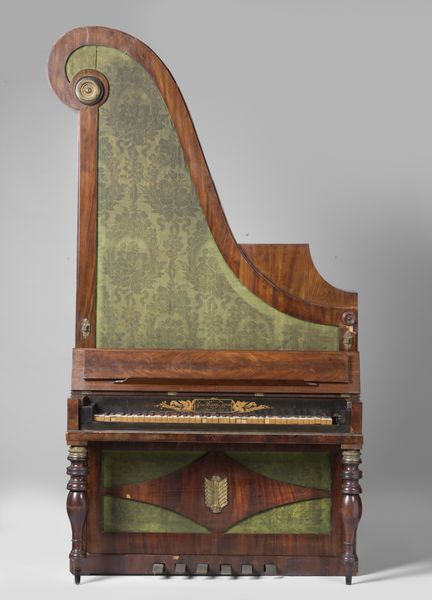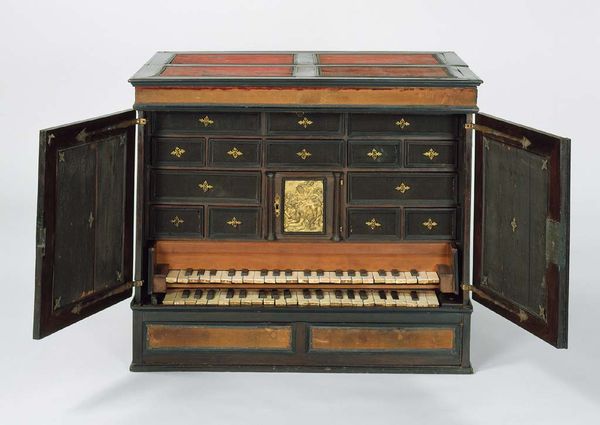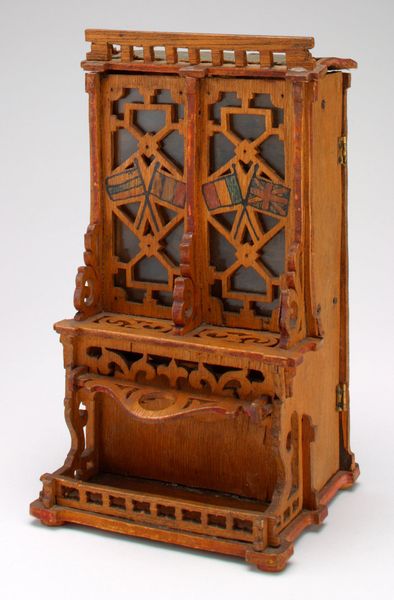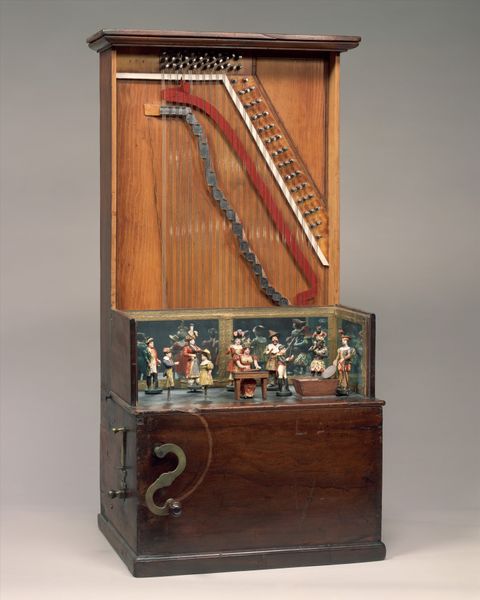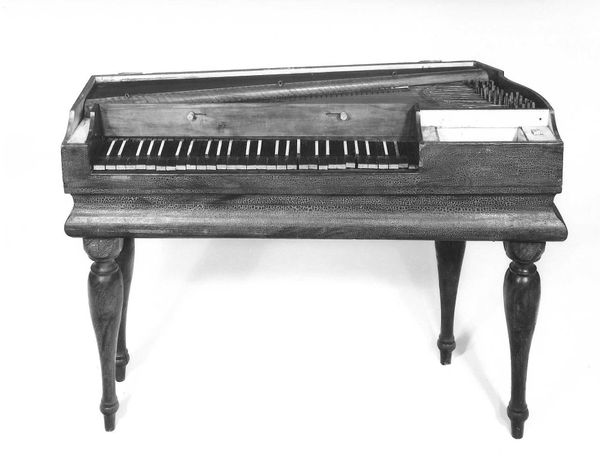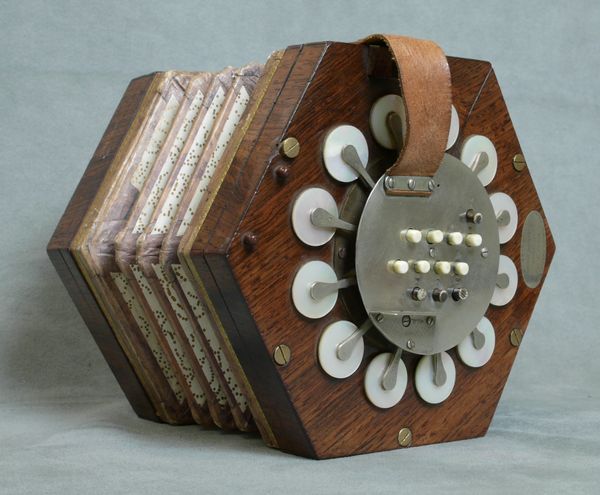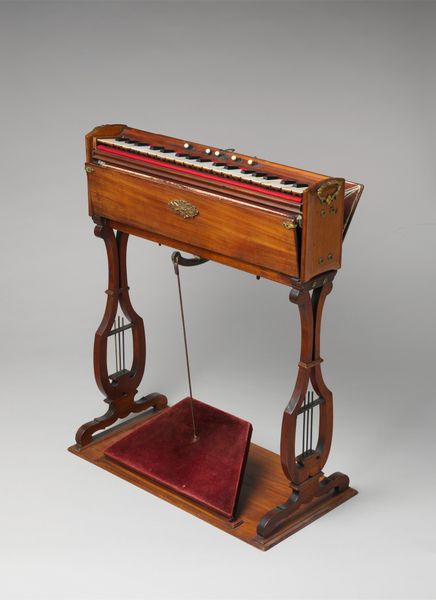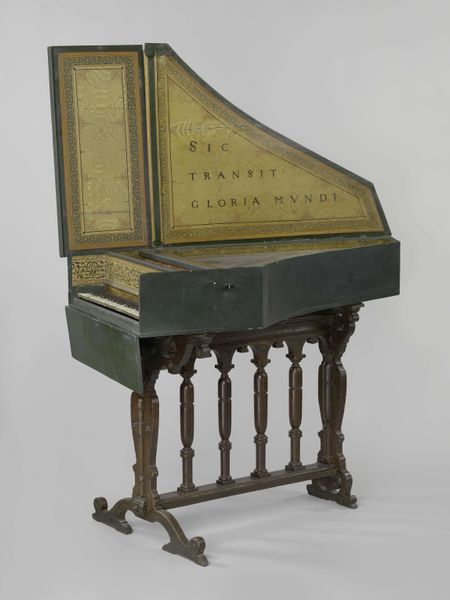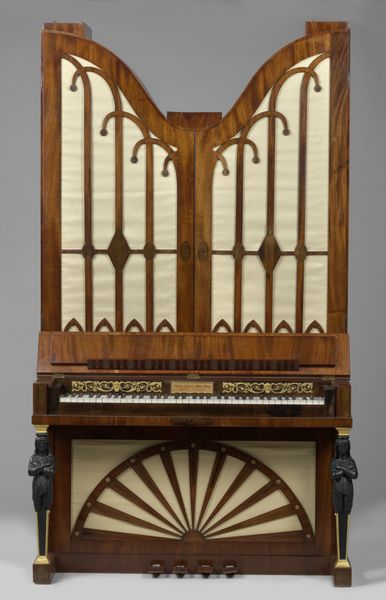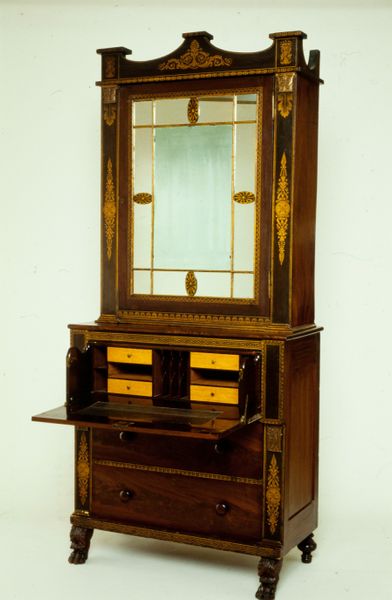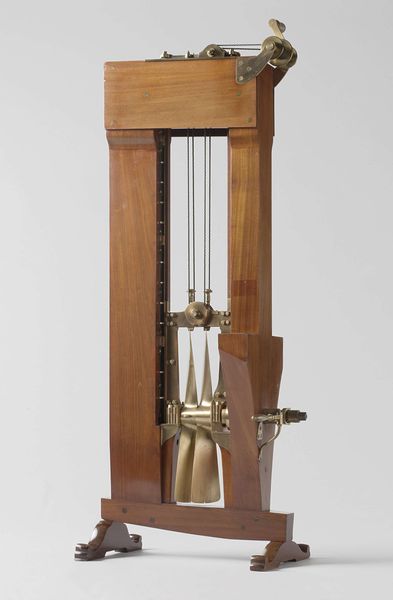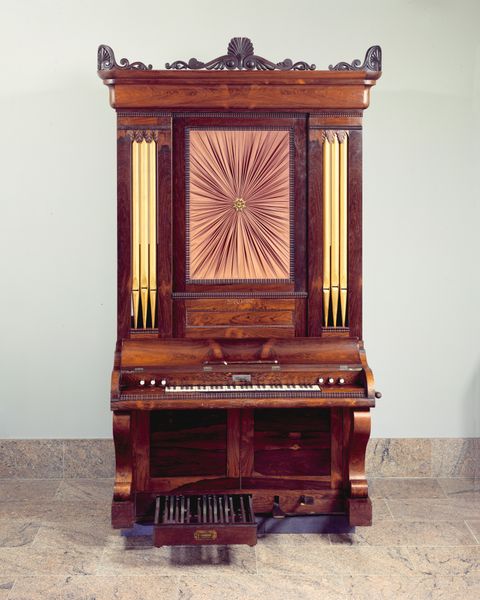
sculpture, wood
#
sculpture
#
sculpture
#
wood
#
musical-instrument
#
decorative-art
Dimensions: Length: 48.0 cm Width: 26.0 cm Depth (closed): 12.5 cm
Copyright: Public Domain
Editor: Here we have Abraham Prescott’s "Rocking Melodeon" from 1825, a wood sculpture of what seems to be a very early type of accordion. The materials look aged and worn, giving it a sense of history and use. What stories do you think it could tell, what do you see in this piece? Curator: This melodeon, seemingly simple, speaks volumes about early American society and the role of music within it. Instruments like this weren't mere entertainment, they were cultural objects. They democratized music-making, bringing social gatherings to life at a time when access to instruments was limited to wealthier segments of society. Notice its wooden construction and relative simplicity. Editor: So it was more than just about making music? Curator: Absolutely. The accessibility of this instrument underscores broader social movements towards equality and participation in cultural life. Who had access to musical education? Whose voices were amplified, and whose were silenced? Think about the types of folk music that might have been played. Who was playing them, and for whom? Were women and marginalized groups able to fully participate? The 'Rocking Melodeon' becomes a site for considering social mobility and cultural expression. What do you make of that, looking at it as an object today? Editor: I guess it gives new context to music history, understanding these instruments as both a medium and a symbol of cultural participation. It prompts you to think beyond the notes, towards who played them and why. Curator: Exactly, the Melodeon embodies cultural dynamism and the struggle for representation in early 19th-century America. It makes you think, doesn't it?
Comments
No comments
Be the first to comment and join the conversation on the ultimate creative platform.

